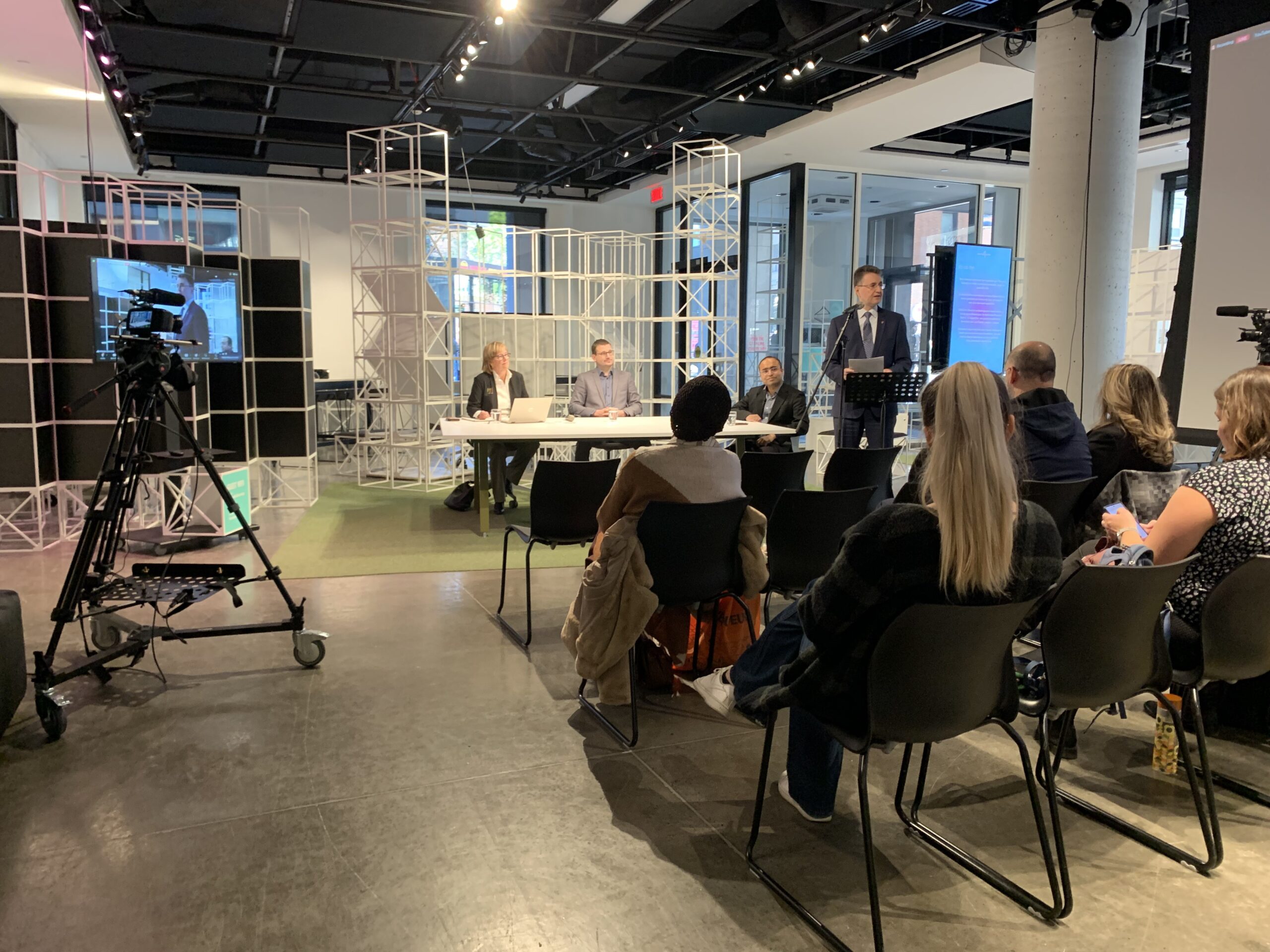In the wake of World’s Children Day, one Concordia public scholar hosts events on child safety in the digital age.
On Nov. 20, 4th Space Concordia, the university’s event-hosting public space, opened its doors for a week-long event educating attendees on children’s safety when consuming content online.
Headed by Azfar Adib, a PhD candidate in electrical engineering and computer science at Concordia, the events centered around the legislative, technological and social aspects of children’s online safety in Canada.
The first event consisted of multiple panelists including experts in technology and legislature, as well as members of advocacy groups. Panelists answered questions pertaining to the subject matter from both moderator and audience.
“I think as technology changes, I probably will know less as it goes on. And so there might be a gap between me and my child,” said Brogan Stewart, PhD candidate in environmental science at Concordia University. “I didn’t realize, like, the extent of it really until I came here.”
Stewart, who is currently expecting a child, said her curiosity surrounding methods used to prevent children from accessing mature content motivated her attendance. She believed it may become a problem she’ll have to deal with later on.
Stewart, who witnessed the rise of the internet growing up, expressed her fears of no longer being able to prevent her children from stumbling upon content unsuited for kids, especially pornography.
“It’s not just a different format, you know. The content, the abuse, the dehumanization, the objectification—it’s really difficult to keep [porn] away from kids,” said Penny Rankin, Vice President of the National Council of Women of Canada (NCWC) and one of the panelists. “And the trouble is, we have a demand for it […]—it’s addictive.”
The NCWC advocates on behalf of women and children. In recent years, Rankin has been involved in the ongoing situation of trafficking of women and children in the adult entertainment industry. In late 2019, popular pornography website PornHub and its parent company MindGeek (now Aylo) were accused of sex-trafficking and hosting non-consensual intercourse.
Rankin was among the many who protested at the company’s Montreal offices, along with the aforementioned event host, Adib, and independent senator Julie Miville-Dechêne.
Millville-Dechêne previously introduced two Senate public bills, namely Bill S-210, “which would require the implementation of age verification methods online to protect minors from exposure to online pornography.”
Rankin believed the consumption of pornography at a young age is detrimental to a minor’s development, further desensitizing them to unrealistic expectations or violent acts during intercourse. She’s been calling on the government of Canada to adopt laws to prevent further exposure, such as implementing bill S-210’s harsh age verification laws.
“It’s a first step. This is not going to solve the problem, but it is going to at least finally– shine not just a light on an issue– it’s going to hopefully be a first step from a legislative point of view,” Rankin said.
Since 2019, host and moderator Adib has been working alongside people like Millville-Dechêne and Rankin on implementing non-invasive technology to verify age and prevent children from accessing pornographic content. His research at Concordia has led him to develop verification via electrical signals of the human body, specifically from the human heart.
Adib’s device is attached at the wrist and uses artificial intelligence to identify the individual’s age through their heart rate.
Adib has previously spoken at the Senate in 2021 alongside Millville-Dechêne for the implementation of his technology. As his developments gained more followers and funding, he said he believed it to be a realistic alternative to providing personal information, like information on I.D.’s. However, he believed its application won’t be fool-proof.
Adib said the child online safety events were spurred on due to PornHub’s parent company recently undergoing an administrative overhaul, which he believed aimed to distance themselves from controversy.
Bill S-210 was recently debated in the House of Commons on Nov. 23, its second hearing after passing in the Senate.
